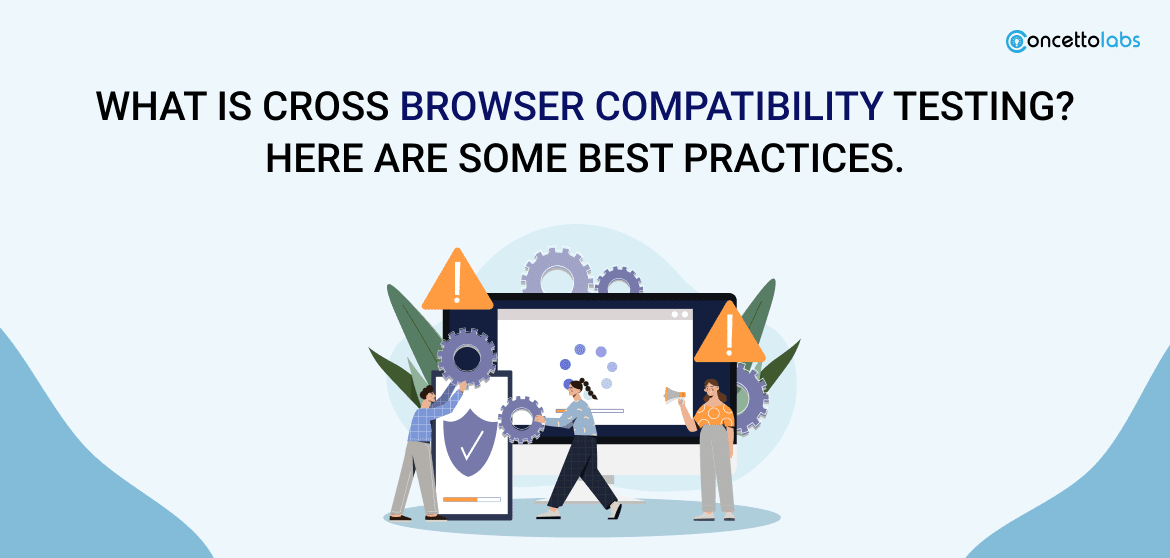
Summary: Cross-browser compatibility testing is an important thing to ensure a smooth user experience on multiple web browsers. In this article, we will learn about the process to achieve fine results.
Nowadays, Digital presence has become the most significant part for any business to survive in the modern era of technology. Physical stores have their place, but online marketing is a crucial part of the process. Digital interaction via the internet has increased the certainty of the web and mobile apps. Thus, having a web page plays an important role in customer engagement.
Here, web app development experts can suggest the overall outlook of your app. However, multiple web browsers are an issue for the developers as a user can visit any of the browsers and web developers must ensure that the web page should appear the same in each of them. It has created an additional challenge of ensuring a web browser in each browser. This shows that web browser compatibility becomes an important checkmark in the to-do list of developers for generating successful business experiences. Let’s understand more about it.
What is Cross-Browser Compatibility Testing?
Cross-browser compatibility testing is the crucial quality assurance process during the web development process. It involves testing web pages in different browsers to ensure that a website or web application appears and functions likewise in each of those.
Each web browser has been developed by different companies and has unique rendering engines, they may have interpreted their CSS, HTML, and JavaScript code differently. This can bring most of the time UI UI-related issues and a couple of times functional issues for those who access the site. To resolve such issues hire website designer who works with browser compatibility assurance.
How Cross-browser and Compatibility Testing are Different From Each Other?
Cross-browser testing focuses on the functionality that works correctly across different browsers. The main focus is to check the behavior among distinct browser rendering engines. While compatibility testing is a broader version of testing. It includes not only browsers but also different devices, operating systems, screen sizes, and network conditions among different environments.
There are 3 Main Browsers for Cross-browser Testing
- Chrome: It is the most popular browser among users. Integration with Google accounts on multiple devices is easy. It has strong features, including features of extension via Google Web. Due to easy navigation, password management, and data sync, Google Chrome is the most used browser.
- Mozilla: It is one of the oldest browsers, longer than Chrome which makes it easy to run old websites. It has support for the latest HTML and CSS. So it is the second most demanding browser among users.
- Safari: This is the unique browser for all iOS and Mac devices. This was the first browser that introduced reading mode. It works well across all Apple products, and it is faster than Chrome and other browsers.
What are The Common Issues in Cross-browser Compatibility?
- Differences in rendering web pages
- Compatibility issues with third-party libraries and framework
- Inconsistency in styling of CSS
- Compatibility issues with plugins like Java or Flash
- Browser specific issues
Let’s find out the browser compatibility testing checklist
well-structured for all browsers and devices. You can hire qa engineer at Concetto Labs as we work on the following checklist for each project.
- Check for validation: The code validation process is the best practice for ensuring code compatibility. This process covers revisiting HTML and CSS codes written by developers. Even minor issues present there can create more significant issues. Thus, it is good to recheck the code before making it live. There are many validation tools available in the market which makes the process easy.
- Create a Systematic Process: Here, we need to balance browser compatibility testing and web development. Whenever the developer completes the initial stage of development, the tester should start testing of completed parts. This can help in identifying the cross-browser compatibility issues in an earlier stage of development.
- Use Proper Framework and Libraries: To decrease the rate of compatibility issues, developers should opt for selective frameworks and libraries. jQuery, react JS, and Angular JS are the popular JavaScript libraries, while Bootstrap, Foundation, and 960 Grid are suggested CSS frameworks. These options help developers to improve the quality of software.
What are the Best Tools Available for Cross-browser Testing?
- Browser Stack: It is a mobile and web-based testing tool. It helps in operating the same website or app on multiple browsers and devices for compatibility tests.
- LamdaTest: This is a cloud-based cross-browser testing platform that allows users to run manual and automated tests on multiple browsers and operating systems.
- Selenium: Selenium is very popular for automation testing. By making a simple change of browser in the script, test case execution for different browsers can be arranged with a single click.
Would you like to avail the benefit of our Software testing & QA services?
Hire QA EngineerConclusion
Cross-browser compatibility testing is an important process to deliver quality solutions. The situation became more complicated due to the availability of different devices in the market. Due to that, cross-browser compatibility of the website is more challenging. To connect with our web development expert, you can contact us.
However, with the right website development strategy and accurate test planning, we can achieve compatibility. Concetto Lab is a leading UI/UX designing company where you can hire a website designer to work on your website to get a browser-compatible website.
Frequently Asked Questions
Here are some frequently asked questions about employing our developers that may help you.
